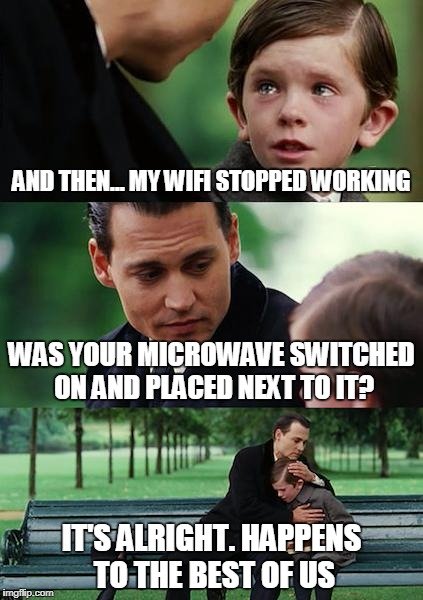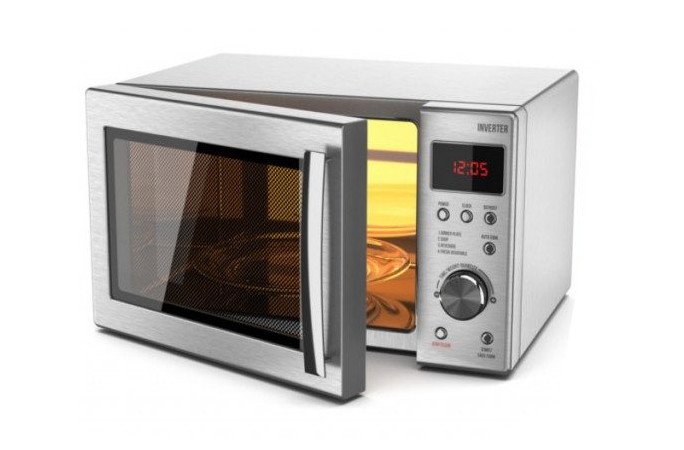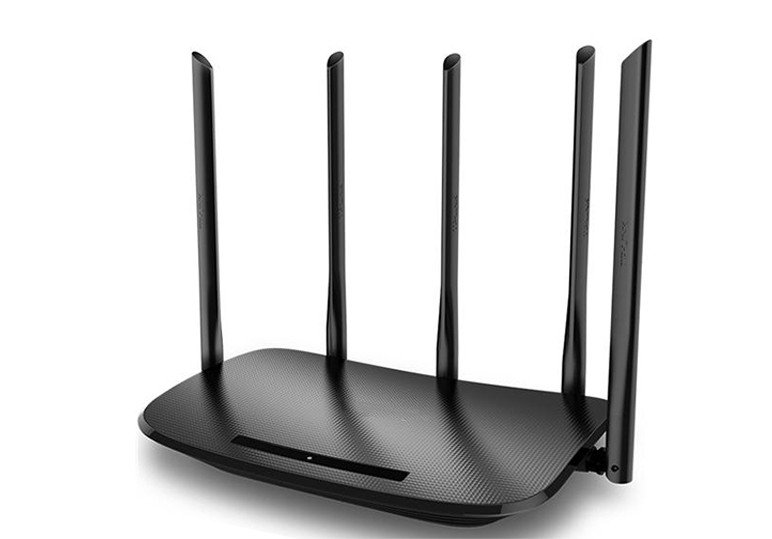Yes. Microwaves and radio waves are physically the same, i.e. both are forms of electromagnetic radiation. Some microwave rays can leak out and interfere with WiFi signals.
If you have a microwave, you may have noticed that when it is in use, you may also have problems loading web pages on your smartphone, laptop, or other Internet-enabled device, especially if your router and microwave are in close proximity.
Why does this happen? Why does turning on the microwave hinder your WiFi connectivity?
Like most things that have to do with “electrical signals,” the answer begins with the following term: electromagnetic radiation.
What Is Electromagnetic Radiation?
We are basically constantly surrounded by electromagnetic radiation. Visible light, something that permeates everything around us, is a form of electromagnetic radiation. Likewise, many other things, including mobile phones, television remote controls, microwave ovens, WiFi, work via electromagnetic radiation.
Electromagnetic radiation comes in different forms depending on the frequency. Gamma rays and X-rays have high frequencies and therefore high energies, while radio waves and microwaves are on the other side of the band as they have lower frequencies. You may remember the following chart of the electromagnetic spectrum from your high school science class.

Also Read: Why Are Infrared Waves Associated With Heat?
Microwave Ovens And WiFi Routers
As mentioned earlier, many everyday appliances rely on electromagnetic waves to function. Two of the most common household appliances are microwave ovens and WiFi routers, both of which emit electromagnetic radiation to function; microwave ovens emit microwaves to heat food, while WiFi routers emit radio waves.
Microwave ovens convert electricity into longer-wavelength electromagnetic waves, called microwaves, which are emitted inside a tightly sealed metal box. Theoretically, these waves bounce back from the wall and should not bypass the wall.
Although it is still not quite clear how the heat is distributed throughout the food being subjected to the waves, microwaves are known to be extremely adept at exciting and vibrating water molecules, and most natural food has some water constituent in it.
These microwaves lead to vigorous motion of the water molecules, creating intermolecular friction, which generates the heat to cook the food.
Also Read: How Does A Microwave Oven Work?
A Clash Of Frequencies
If you are a science freak like us, constantly looking for causality and correlation between almost everything that exists, you may have noticed that the moment you stuff your food into the microwave and turn it on, your WiFi connection becomes unpredictable.
In some cases, your device may not connect at all, but after you turn off the microwave, the Internet connection is back to normal.
If you haven’t observed this, try it for yourself. Put your WiFi modem and microwave in the immediate vicinity and turn on the microwave. Install some Internet speed tests, such as Speedtest of Ookla.
Try to heat water in the microwave and check your Internet connection while the microwave is running. You will likely experience connection problems or speed degradation… but why does that happen?

Well, the reason for this problem is the frequency of operation, which overlaps between your WiFi modem and the microwave oven. Both usually operate at a frequency of about 2.4 GHz. However, unlike WiFi modems, microwave ovens do not transmit data, but emit signals in the unlicensed 2.4 GHz ISM band (Industrial, Scientific and Medical band).
As we have already said, a well-shielded microwave oven of the brand should not allow microwaves to escape within its metallic boundaries; in principle, it should prevent all the microwave radiation produced in the oven from escaping to the outside, but in reality it does not.

Some microwave radiation leaks out and interferes with WiFi signals, i.e. 2.4 GHz radio waves. Note that this interference at 2.4 GHz is caused by commonly used WiFi devices (e.g., WiFi routers, smartphones, cordless telephones, Bluetooth devices, and so on) that work on 802.11a and 802.11g standards. Some other devices that can cause similar interference include electric blankets, electric bug zappers, toaster ovens, etc.
Also Read: What Happens If There’s A Hole In Your Microwave?
Is This Interference Dangerous?
Of course, mixing and mashing electromagnetic waves emanating from the WiFi device and emerging from the microwave could make us nervous if it could damage the device. Fortunately, this is not the case, and you should not worry that your device or gizmo will be damaged by this interference from electromagnetic waves.
Remember that it is not the actual devices that mix, but only the waves emanating from them.
Nor should you worry about radiation, as we are all surrounded by giants and devices that constantly emit these high-frequency electromagnetic waves, including our smartphones, computers, appliances, power lines, baby monitors, etc. Only if your microwave completely strangles the Internet, even though the WiFi router is several meters away, should you give enough thought to asking the manufacturer for replacement / repair.
Also Read: What Is Electromagnetic Pollution?
How To Eliminate The Interference Between Microwave And WiFi Signals?
The best solution to this problem would be to upgrade your WiFi equipment to a system that operates in the 5 GHz band. Modern 802.11n routers operate in this band, not in the 2.4 GHz band.
As you can see, 2.4 GHz and 5 GHz are two bands that your router can use for its signals. The advantage of using 5 GHz is that it not only prevents interference from the above mentioned devices that operate in the 2.4 GHz band, but also supports better connectivity (to the order of more than 1,000 Mbps). However, the operating range of a 5 GHz router is smaller than one operating at 2.4 GHz.

Another way to minimize interference is to keep the microwave a few meters away from the router. Since water is also a good absorber of electromagnetic waves, if you have a fish tank, it should also be kept a few meters away from the router.
Finally, a cheap way to improve this situation is to interrupt the “Internet work” while the microwave is still on. Or you can just get used to the fact that the Internet behaves badly when surfing next to the microwave. Best of all, the interruption of the Internet connection should rarely last more than two minutes!
Also Read: Does Distance From The Wi-Fi Router Impact Download Speeds?
How much do you know about microwave and WiFi signals?
Can you answer three questions based on the article you just read?

References (click to expand)
- 802.11ac: The Fifth Generation of Wi-Fi - www.cs.odu.edu:80
- How Can WiFi Defeat Interference from Microwave, Baby .... people.csail.mit.edu
- Wireless Communication Electromagnetic Spectrum (3kHz. The University of Washington
- M Brain. The Walkie-Talkie Network WiFi's Radio Technology How .... The State University of New York at Albany
- IEEE 802.11b Wireless LANs. The University of Colorado
- TM Taher. MicroWave Oven Signal Interference and Mitigation for Wi-Fi .... Illinois Institute of Technology
